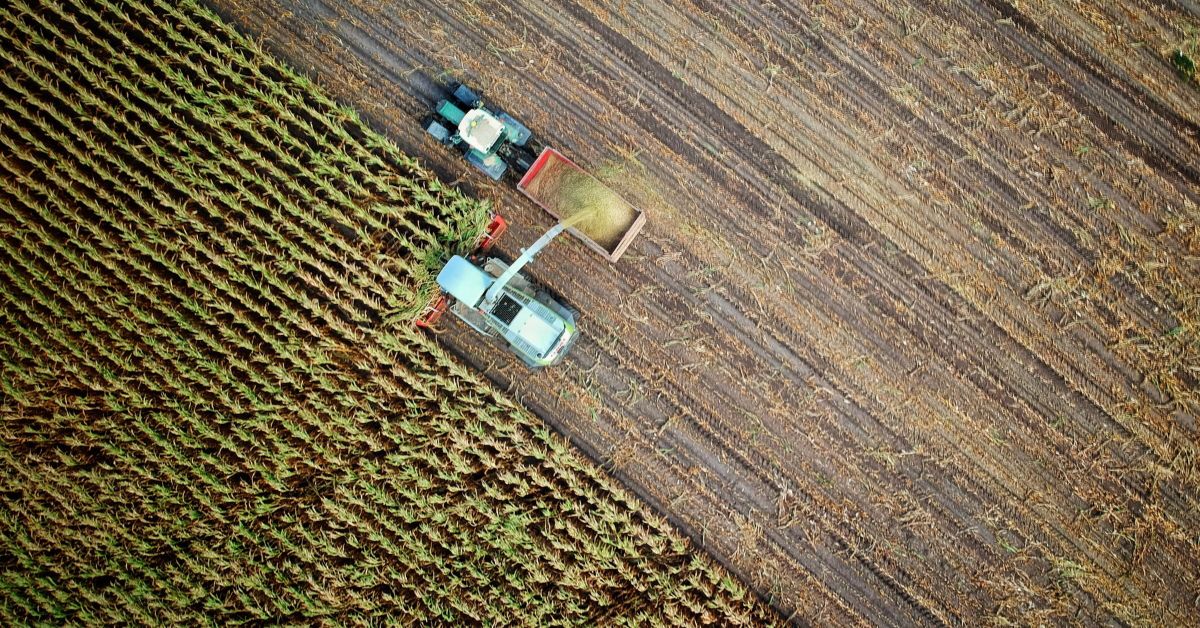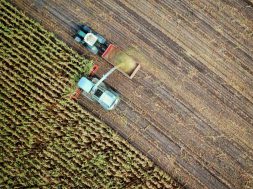
By: Michael McQueen
We often think of the world of farming and agriculture as the antithesis of the technological hubs of places like Silicone Valley.
Our urban Internet of Things feels worlds away from the earthier environments that keep our people fed and our societies functioning. It’s easy to forget that one of the industries where tech innovation is hitting the ground most effectively is agriculture.
Agricultural technology, or ‘agtech’, is moving just as quickly as the technology in other industries, and is significantly improving the efficiency, profitability and sustainability of farming. Significantly, agtech is boosting precision agriciulture which is based on precise monitoring and measurement of the environment and aims to maximise farm outputs. Particularly as concerns grow surrounding food wastage and the health of our environments, the sensors, drones and autonomous technology now being used on farms are providing solutions that are both effective and timely for farmers.[1]
Robo-farmers Not Afraid to Get Their Hands Dirty
It’s the last place you would expect to find them, but recent innovations are seeing robots getting their hands dirty on our farms to get food into human mouths. Farms have struggled to find workers in the last couple of years, as pandemic border closures cut off the already somewhat unreliable backpacker labour force. Labour shortages have meant large amounts of food wastage as farmers have simply not had enough hands to harvest the food from the field.
Help is on its way, but from the unlikeliest of places. With several companies creating tech-driven solutions, robots are now able to step in to help where there are no longer enough willing humans. Daryl Boardman, an avocado grower based near Toowoomba, has been among the many farmers now planning to engage robot help. Australian start-up, Lyro Robotics, will be providing a robot that will work in the packing shed, transferring avocadoes from a conveyer built to the trays that will arrive in our supermarkets.[2]
While the cities are seeing the rise of self-driving cars, the country is not missing out, getting its fix of autonomous vehicles in the form of self-driving tractors. Agricultural machinery company, John Deere, has now delivered the 8R tractor which can plough fields and plant crops without the assistance of humans. Stereo cameras and AI allow the vehicle to scan and respond to the surroundings, and the whole thing can be controlled remotely by the farmer via a smartphone app.[3]
Similarly, a US company called FarmWise Labs Inc. has created a huge robot with twelve arms that is being used to sort the weeds from the celery on a farm in California. Computer vision and in-built AI discern whether a plant is food or a weed and then direct its ‘arms’ to act accordingly. The robot runs on diesel, but generates its own electricity in order powers its computer systems.[4]
Taking Over Animals’ Roles
Not only are robots taking over the farm work that has typically been reserved for humans, but also the farm-work that we have always delegated to dogs. Boston Dynamics the last couple of years has been deploying robo-dogs, called Spot, to herd sheep and inspect crops. Some of its greatest value is found in its ability to navigate rough terrain and complete the tasks which are both difficult and dangerous for humans.[5]
Another set of hands, and another set of eyes.
AI technology and robots are not only helping farmers out by getting their hands dirty, but also by automating the monitoring of crops that is so essential for effective farming. The Internet of Things, or the move of AI-powered sensors into various human environments, is now making its way into our farmlands in order to reduce food waste and implement pest control.
Every year, hundreds of billions of dollars are lost in damages to agriculture as a result of insect pests. The problem is often less about getting rid of the pests, and more a matter of knowing they are there in the first place. A California-based startup FarmSense, a startup based in California, has been working to rectify this, using machine learning to track insects before they become a problem.
The sensor they use, which they call ‘FlightSensor’, uses similar laser technology to that used by Russian spies in the Cold War. Attractants are used to draw insects into a tunnel containing a light source where a sensor then tracks them by determining how much light is obstructed by their flight. This monitoring takes place in real time, meaning farmers have access to highly accurate data and are then able to respond quickly and accurately. Knowing the precise amount of pesticide to use, based on this data, means they save money and protect the environment – some of the biggest benefits of precision farming.[6]
This automated monitoring of crops is hitting the skies too, with drone technology being continually developed for farming purposes. One company called Indigo Drones is using unmanned aerial vehicles and Internet of Things devices to help farmers aerially map and monitor their land. This technology can be used to determine need for pesticides, similar to FarmSense’s FlightSensor, but also the data can help to forecast weather so that farmers can pre-empt the kind of care their crops will need months in advance.[7]
What these farm-based innovations highlight is how the technology which we often fear will take over out jobs is often simply taking over the jobs that we don’t want to do. When tasks are dangerous, difficult or plain unpleasant for humans, when the labour market is suffering shortages and when there is literally too much ground to cover is when technology can serve us best.
[1] Estes, Adam Clark 2022, ‘We’re one step closer to self-farming farms’, Vox, 8 January.
[2] Bonyhady, N 2022, ‘Could robots be coming to the places that grow your food?’ The Sydney Morning Herald, 23 September.
[3] Estes, Adam Clark 2022, ‘We’re one step closer to self-farming farms’, Vox, 8 January.
[4] Mims, C 2021, ‘How AI Is Taking Over Our Gadgets’, Wall Street Journal, 26 June.
[5] 2020, ‘Boston Dynamics deployed a fleet of its dog-like robots to conduct agricultural tasks in New Zealand’, Trend Watching, 1 June.
[6] Magloff, L 2022, ‘Real-time insect pest identification could prevent damage to crops’, Springwise, 25 January.
[7] Lane, K 2022, ‘Unmanned crop monitoring helps small farmers in Costa Rica’, SpringWise, 25 March.
Article supplied with thanks to Michael McQueen.
About the Author: Michael is a trends forecaster, business strategist and award-winning conference speaker.
Feature image: Photo via Unsplash










